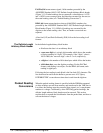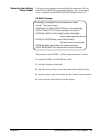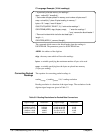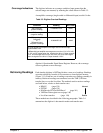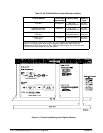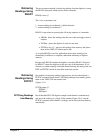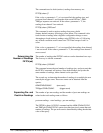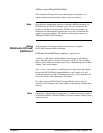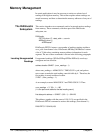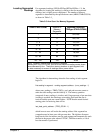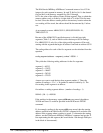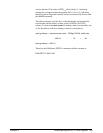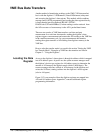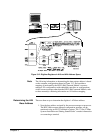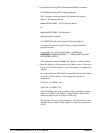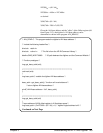
Memory Management
In certain applications it may be necessary to retrieve a selected set of
readings from digitizer memory. This section explains where readings are
stored in memory and how to determine the memory addresses of any set of
readings.
The DIAGnostic
Subsystem
This section introduces two commands used to locate and retrieve readings
from memory. These commands, which are part of the DIAGnostic
subsystem, are:
DIAGnostic
:FETCh[<
chan
>]? <
start_addr
>, <
count
>
:MEMory[<
chan
>]
:ADDResses?
DIAGnostic:FETCh? returns count number of readings starting at address
start_addr from channel chan. DIAGnostic:MEMory:ADDResses? returns
a list of 32-bit values containing memory address information for each
segment. The use of these commands is shown in the following paragraphs.
Locating Unsegmented
Readings
Unsegmented readings (SENSe:SWEep:OFFSet:POINts 0) are always
contiguous and are stored at:
address location 524287 - (num_readings - 1)
where num_readings = ARM:COUN * TRIG:COUN + pad, and pad are
extra counts to make the total reading count divisible by 4. Therefore, the
first reading is stored at address location
524287 - (num_readings - 1).
As an example, assume ARM:COUN 3 and TRIG:COUN 53. Then:
num_readings = 3 * 53 + 1 = 160
(1 is the pad count added to the total reading count)
first data point address = 524287 - (160 - 1) = 524128
This address, together with the count of 159 (3
*
53) are specified in the
DIAGnostic:FETch? command to retrieve the readings (from channel 1):
DIAG:FETC1? 524128,159
142 Understandin
g
the HP E1429 Di
g
itizer Chapter 3



